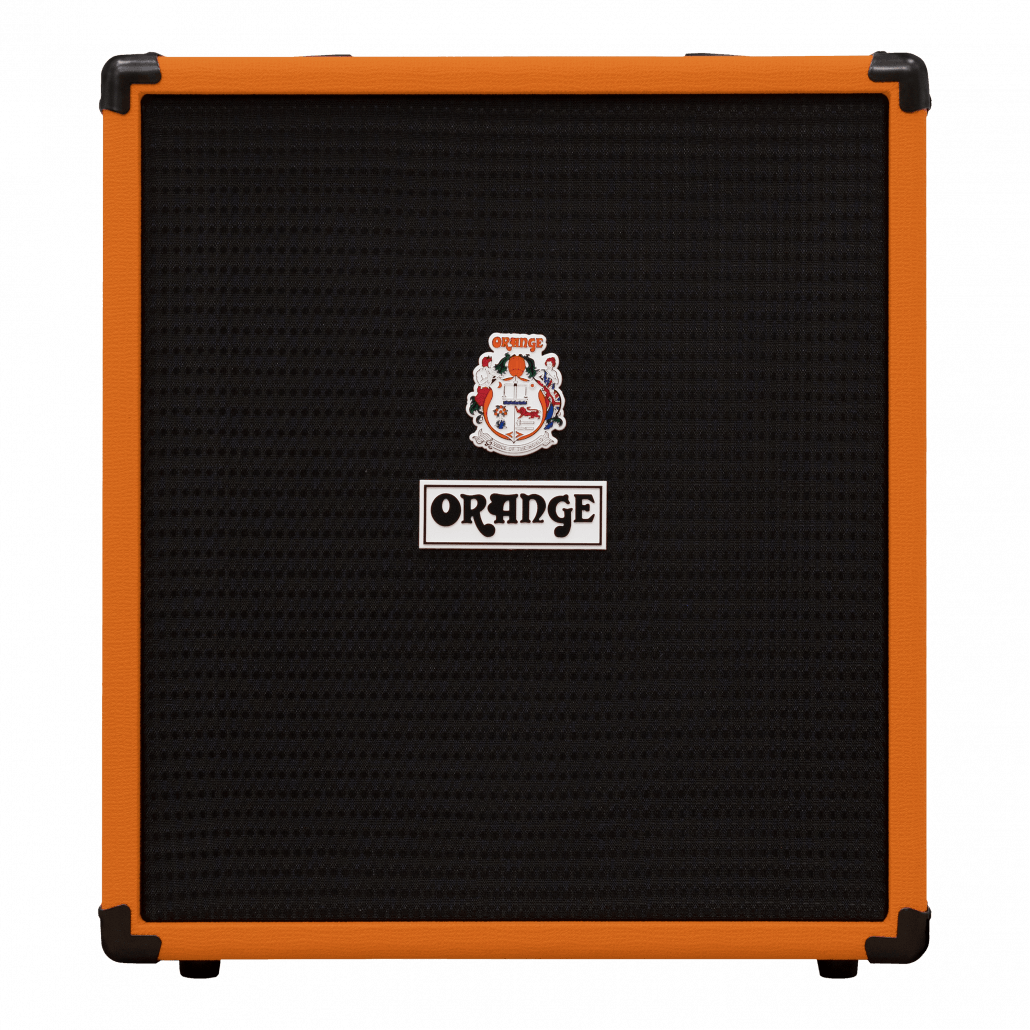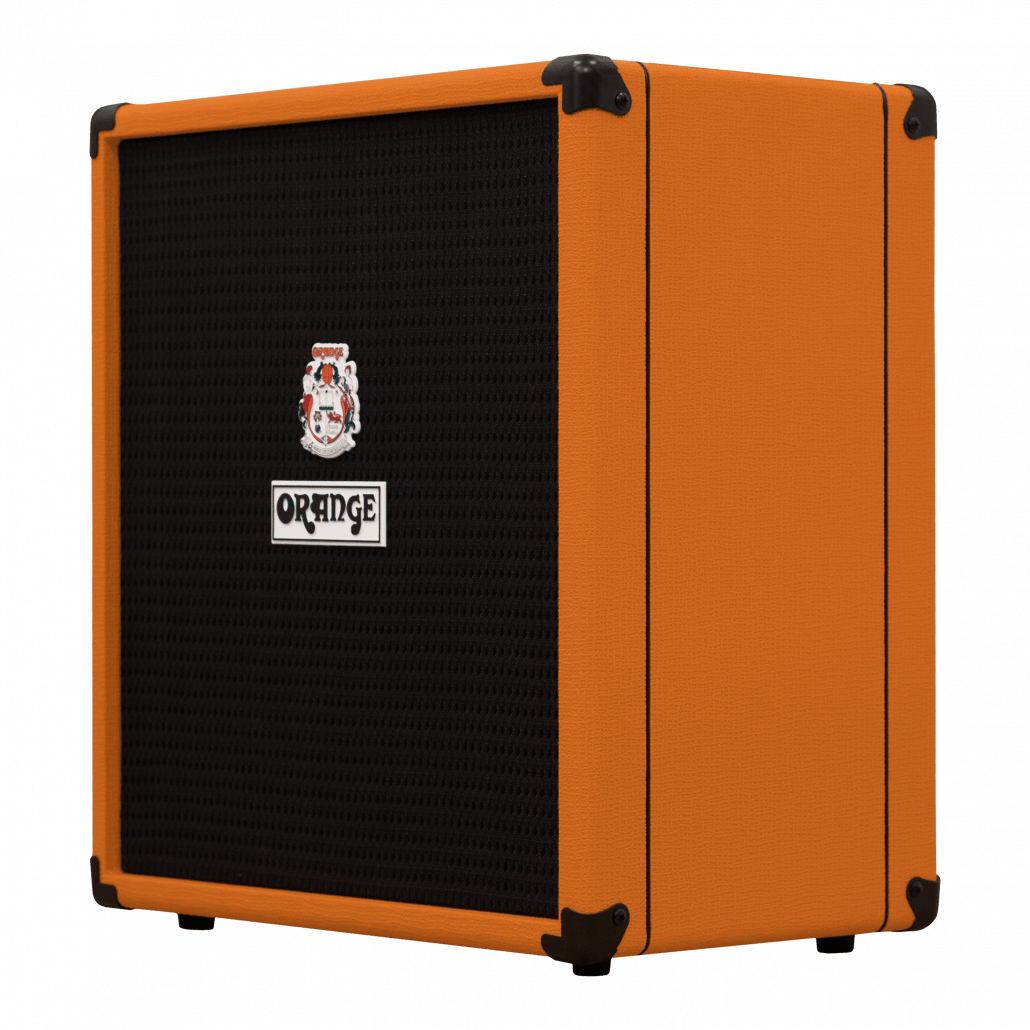Description
From warm modern cleans, through to vintage grind and all the way up to full-on distorted mayhem, the Crush Bass 50 combines the essentials of a practice rig with tone and features normally reserved for the pros. The Crush Bass 50 draws inspiration from our flagship OB1 and 4 Stroke amplifiers, bringing some of the defining elements of each into a compact combo.
Like the rest of the Crush Bass range, this 50 Watt model delivers bold and punchy lows courtesy of its analogue circuitry and ported cabinetry. The extremely flexible active EQ section includes a sweepable parametric mid band, allowing players to shape their signature sound without limitations. For even more versatility, the interactive Gain and Blend controls are primed for creating enormous ‘bi-amped’-style tones with ease, adding extra harmonics and variable levels of grit to the core bass tone. They can also be switched in remotely using the optional footswitch. Other handy features include a buffered effects loop, integrated tuner, aux. input and a headphone output with our Cabsim circuitry.
The Crush Bass 50 features an EQ circuit inspired by our prestigious 4 Stroke Series amplifiers. At its centre is a parametric mid band. This presents players with a much greater degree of control over the sound than a traditional EQ, allowing them to vary the frequencies they want hear. The mid band covers a wide range, sweeping from 300Hz (fully counter-clockwise) to 2.7kHz (fully clockwise), meaning this amp can be fine tuned to suit any musical style. The active circuitry allows for up to 15dB of boost or cut on the bass and middle frequencies, and up to 20dB on the treble side.
BLEND & GAINLifted straight from our popular OB1 Series amps, the Blend and Gain controls are a nod to the many bass players who experiment with guitar and bass amps simultaneously. In this ‘bi-amped’ setup, layers of harmonics and distortion from the guitar amp are blended with the core bass tone to create the ultimate full-range live sound. The Crush Bass 50’s Gain and Blend controls create the same effect in a single package, adding extra bite and crispness to the tone at lower gain settings, right up to all-out filth with the dials cranked. These controls can also be engaged remotely with the optional FS-1 footswitch, ideal for fattening your tone on the fly.
ANALOGUE DESIGN & PORTED CABINETThe Crush Bass series delivers fat, rounded sound thanks to an all analogue signal path. The Crush Bass 50 houses a 12” speaker with a reflex port for improved low-end response. The buffered effects loop has been engineered for maximum transparency, ensuring your pedal arsenal will perform to its peak.
CABSIM HEADPHONE OUTPUT, AUX INPUT & CHROMATIC TUNERThe headphone output features our Cabsim circuitry which emulates the response of our stage-ready OBC bass speaker cabinets during silent practice. This signal can also be sent to a console for seriously authentic direct recording. The Aux. Input allows for connecting external audio sources for backing tracks whilst the handy onboard tuner makes for quick tune-ups between jams.
I hadn’t designed [the older Bass Series] and I wanted something better than what was out there. So improved the speakers, ported the cabinets so you get more bottom out of them – the speakers can move a lot more… cone excursion.. you know.
Ade EmsleyTechnical Director –You can go in the studio, take that bass combo and make your album with something like that, it’s truly outstanding. It’s gritty, it’s punchy, sustain is so important and it’s certainly got all that.
Glenn HughesBassist for Deep Purple –This sounds really meaty. We tweaked it [the Crush Bass combo] for a about 30 seconds tops and we got a great sound without investing much time into it. With the Crush Bass 50, I see myself using it on home, recording with it, taking it on the road, recording at the hotel. This thing sounds really good. I could use this live in certain capacities and certain gigs and I wouldn’t have any issue bringing this into a space.
Sergio VegaDeftones/Quicksand –The Orange Crush Bass is exactly what you need from a practice amp.
Theo EllisWolf Alice – “Crush 50 O Bass Fuzz” 00:00 00:00 0:32 0:49 0:24 FEATURES: ACTIVE 3 BAND EQ, PARAMETRIC MID CONTROL, BI-AMP INSPIRED BLEND & GAIN CONTROLS (FOOTSWITCHABLE), BUFFERED EFFECTS LOOP, CHROMATIC TUNER, CABSIM-LOADED HEADPHONE OUTPUT & AUX IN CONTROLS (RIGHT TO LEFT): -6DB PAD SWITCH, GAIN, BLEND, BASS, FREQUENCY, MIDDLE, TREBLE, VOLUME(BELOW) INTEGRATED CHROMATIC TUNER FINISH OPTIONS: ORANGE OR BLACK BASKETWEAVE VINYL OUTPUT POWER: 50 WATTS SPEAKER: 12″ UNBOXED DIMENSIONS (W X H X D): 43 × 48.5 × 27.5CM (16.93 × 19.09 × 10.83″) UNBOXED WEIGHT: 14.45KG (31.85LB)
A portable, reasonably priced rehearsing combo that’s really well put together. A good if you can’t afford the 100, and although not as versatile, it sounds just as good. Rating: 9/10
Guitar & BassMagazine Review –[The blend control] allows you to replicate the sounds created by some of the pioneering rock bassists of the ’60s and ’70s who used to split their bass output and send separate signals to bass and guitar amps simultaneously, allowing them to blend the overdriven sound of the guitar amps with the main (clean) bass sound.
The ‘Blend’ and ‘Gain’ controls on the Crush Bass 50 allow you to do this from the front panel – easy to use (it can be switched in via a remote footswitch) and very effective.
The larger cabinet and 12″ speaker gives you an impressive amount of extended low end and higher volume. It would be quite feasible to use this amp on small gigs or perhaps as a backline monitor if it were mic’d up and put through the PA. There’s no dedicated DI, but an output can be taken either from effects send or headphone jack, which features ‘CABSIM’ output circuitry, emulating the sound of an OBC bass speaker rig.
Music RadarWebsite Review –(On the Crush Bass 100) With its affordable price, portable all-in-one design, and impressive variety of tones, the Orange Crush Bass 100 is a highly recommended choice for bass players seeking a combo amp for small venues and the studio.
Guitar WorldMagazine Review –



